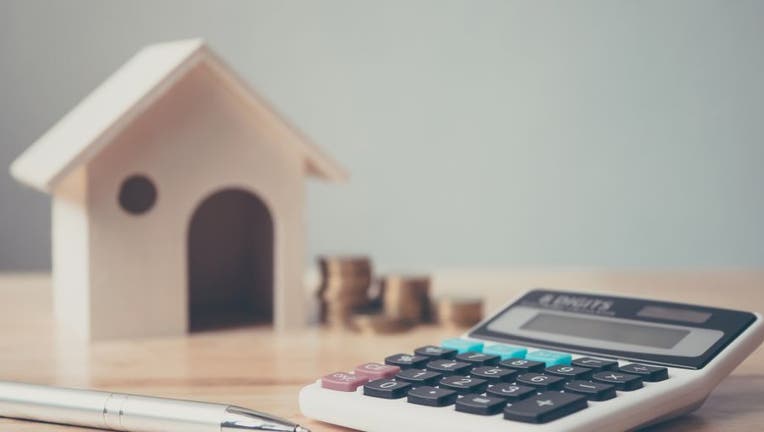How would negative interest rates affect mortgages?

Don’t expect a significant impact; if you’re hoping to buy or refinance, do it now. (iStock)
Following two emergency rate cuts in March, the Federal Reserve’s rate is at a historic low, near zero percent. As the U.S. economy continues to struggle under the weight of the coronavirus pandemic, the Federal Reserve may need to cut the rate to zero or even a negative rate.
The federal funds rate indirectly impacts many of the interest rates you’ll see from lenders, including mortgage lenders. However, lender rates are long-term, while the Federal Reserve’s rate is short-term, so don’t expect a huge drop in new purchase loans and refinance loans.
Credible can help you compare rates and understand what home loan options are currently available to you.
What are today’s mortgage rates?
According to Freddie Mac, mortgage rates have dropped to historic lows, with 30-year fixed-rate loans dipping below 3 percent for the first time in over 50 years.
For the week of July 23, 2020, though, mortgage interest rates increased slightly, though they remain incredibly low:
30-year fixed-rate: 3.01 percent
15-year fixed-rate: 2.54 percent
5/1 adjustable rate: 3.09 percent
To give you an idea of how interest rates have changed over the last year, the average rate on a 30-year fixed-rate mortgage loan was 3.75 percent during the week ending July 25, 2019.
If you’re considering buying a home or refinancing your existing loan, it’s crucial that you shop around on a site like Credible to compare rates and mortgage lenders.
HOW TO TAKE ADVANTAGE OF TODAY'S LOW RATES: CREDIBLE CEO
Negative interest rates explained
The Federal Reserve’s federal funds rate is the interest rates banks pay to borrow from each other on an overnight basis to maintain the necessary amount of reserves. It also helps lenders determine how to set their own interest rates.
Credible can help you find out what kind of mortgage rates you qualify for today.
LOW RATES ARE HERE — DO THESE 3 THINGS TO EARN MORE MONEY
During an economic downturn or financial crisis, lowered rates can help encourage consumers to borrow and spend more. But a negative federal funds rate doesn’t mean a negative interest rate on your mortgage loan. Lenders use the federal funds rate and other factors to determine their own interest rates — that’s why the average rate is currently around 3 percent despite the federal funds rate being close to zero.
In a negative interest rate environment, lenders may offer even lower interest rates than they currently do, which can make borrowing more affordable and appealing.
How would negative interest rates affect mortgages?
Rates are constantly changing, and are often based on a variety of factors. That can include the federal funds rate, inflation, economic growth, the state of the housing market and more.
“Even if the Fed went negative, it would only decrease interest rates on mortgages slightly, likely even less than the negative amount below zero,” said Abe Kahan, president of home lending at Laurel Road.
“At the moment, the demand for mortgages is so strong that lenders have actually increased rates in an effort to curb the demand,” he added. “As such, if rates sunk even lower, it would serve to increase demand and may result in rates staying flat to increasing.”
How would home buyers and mortgage borrowers benefit?
Because there’s no telling exactly how negative interest rates will impact mortgage rates — and because other factors are at play that could cause mortgage rates to continue to increase — it’s hard to say how mortgage borrowers can benefit.
In any scenario where the interest rate is lower than what you’re currently paying on a mortgage loan, you could refinance the loan and benefit from a lower interest rate and lower monthly payments. If this option appeals to you, then check out Credible for all your refinancing needs.
7 COMMON MISTAKES WHEN REFINANCING INTO A LOW MORTGAGE RATE
However, it’s important to keep in mind that mortgage loans aren’t free. In addition to interest, you’ll also pay upfront closing costs, which can range from 2 to 6 percent of the loan amount. If you’re refinancing, calculate how long it’d take you with the monthly savings to make up for those closing costs. This will help you decide if it’s the right move for you.
To improve your chances of getting the lowest interest rate available to you, visit an online mortgage broker like Credible to get personalized loan rates and preapproval letters without an impact on your credit score.
How to get low mortgage rates today
You may be wondering if you should wait until the Federal Reserve cuts its interest rate again. But because there’s no guarantee that will happen and the impact on mortgage rates may not be what you’re expecting, it may be better to start shopping around now.
“Due to the nature of the market, it is nearly impossible to time things perfectly. As we all know, times are more uncertain than ever. Right now, interest loan rates are as low as most folks have seen,” says Kahan. “It’s smart to try to take advantage of these historic interest rates while they remain available in a way that makes sense for your current financial situation.”
Here are some tips to help you score the lowest rates that you qualify for:
Compare loan rates from multiple lenders
Pay down other debts to improve your debt-to-income ratio
Make a larger down payment
Opt for a shorter repayment term, if you can afford it
Pay mortgage points, which can reduce your interest rate in exchange for an upfront payment
Also, consider consulting with a mortgage broker, who may be able to give you more advice on how you can qualify for more favorable terms.
To see how much you could save on monthly payments today, crunch the numbers and compare rates using Credible's free online tool.

